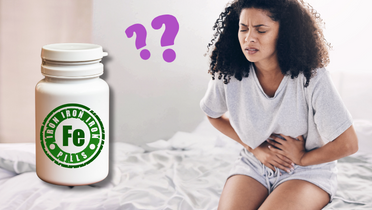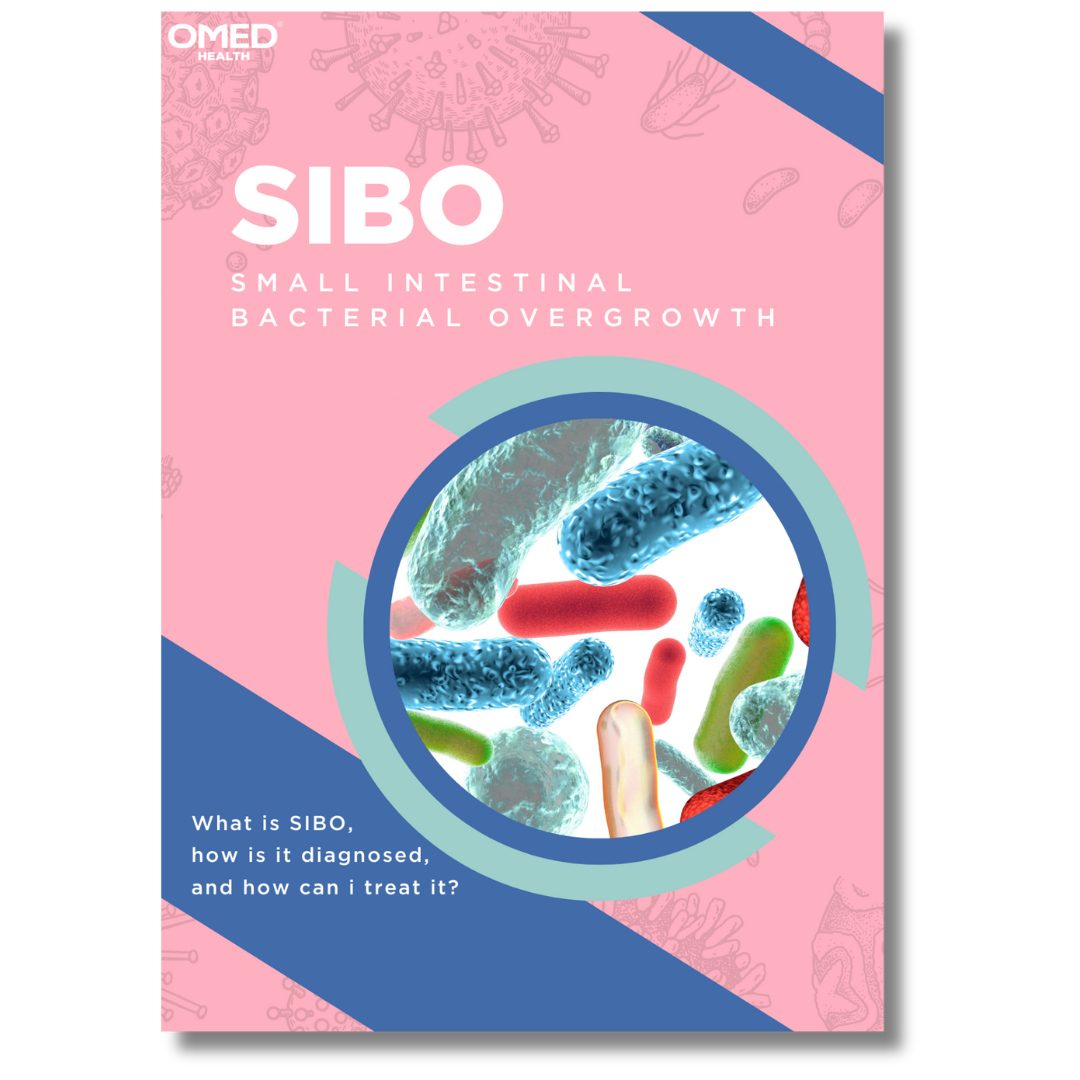Iron is an essential mineral that supports growth and development. It is mainly stored as ferritin in the liver. It is used to make the vital protein hemoglobin that enables our red blood cells to carry oxygen around the bloodstream to fuel our body. Hemoglobin, ferritin and another related protein transferrin are biomarkers that doctors usually check in our blood to diagnose iron deficiency anemia.
Unfortunately, over 1.2 billion people suffer from iron deficiency anemia (1). This happens when there isn’t enough iron available to make hemoglobin for red blood cells to transport oxygen around the body. It triggers symptoms like tiredness, poor concentration, and shortness of breath. A key cause of this type of anemia is low intake of iron in the diet, yet losing blood, low absorption and high usage are also common causes of iron depletion.
The usual treatment for diagnosed iron deficiency anemia is to take iron supplements. However, these can cause uncomfortable gut issues for patients. When people stop taking supplements due to gut symptoms, their iron deficiencies can be left untreated, or worsen (2). In this blog we will go through the different causes of low iron, how to differentiate between different types of iron as well as how they are absorbed by the body. We will then explain a few key studies that investigate gut changes in association with taking iron supplements. Lastly, discover how supplement-induced gut symptoms can be prevented whilst also maximizing iron absorption.
What causes Iron Deficiency Anemia?
The three main reasons behind low levels of iron in the blood are low intake, loss of iron, and high usage in the body. A low intake of iron refers to not getting enough iron in your diet by not eating iron-rich foods. If someone has a suitable diet, deficiencies can occur due to malabsorption. This might be due to a highly inflamed and damaged small intestine, for example, from undiagnosed celiac disease (3). Iron is also lost when you bleed, making heavy monthly periods a common culprit of low iron. The third reason occurs when the body is using iron for growth. This means that children, adolescents, and pregnant women are most at risk.

Dietary Sources of Iron
There are two main sources of iron in food. Heme and non-heme iron. Heme iron derives from the iron stored in animal blood and tissues. High amounts of heme iron are found in red meat like venison or lamb, in organs such as liver, in fish and shellfish. Non-heme iron can be found in plant-based foods. High levels of non-heme iron are present in leafy greens, legumes including soybean products like tofu, as well as nuts and seeds.

What’s the difference between the heme and non-heme iron? It turns out that there’s a major difference in how easily each type of iron is absorbed into the body. 15-35 % of the heme iron that we eat gets absorbed into the body (4). Only 2-20 % of non-heme iron is absorbed (4). This means that you need to eat roughly twice as much plant-based iron compared to iron from meat to absorb the same amount into your body. However, it is interesting to note that the non-heme iron you get from plants is thought to be more easily regulated in the body and could be a reason that meat-heavy/ iron-rich diets have been proposed to contribute to a more inflammatory state in the body (5).
Iron Supplementation
When preventative measures fail to ensure healthy levels of iron in the body, doctors often prescribe iron supplements. There are many different types of supplements to consider. The list below shows some common forms of iron that are commonly prescribed by the NHS.
- Ferrous sulfate (high strength tablets)
- Ferrous fumarate (high strength tablets or syrup)
- Ferrous gluconate (medium strength tablets or syrup)
- Sytron syrup – sodium feredetate (low strength syrup)
Remember to always consult your doctor before taking supplements, especially if you are on other medications. Dosages will be different for everyone, and it is important not to exceed the recommended dose as unabsorbed iron can cause irritation in the gut for some people (6).
Maximizing Iron Absorption
Did you know that certain foods hamper iron absorption? Foods containing dairy as well as tea and coffee reduce your ability to absorb iron. This means that if you drink milk or a caffeinated beverage in the morning, you’ll need to avoid taking iron in the same time frame. The same goes for eating porridge, cereals or other meals that include milk-based products. Consider drinking herbal infusions or taking supplements at another time. Note that antacids (anti-acid medications) and certain antibiotics can also reduce absorption, please consult your doctor if this applies to you.
Iron is best absorbed on an empty stomach. The most important ingredient in maximizing absorption is vitamin C. Citrus fruits are famously high in vitamin C, so a glass of orange juice alongside your iron supplement is an easy way to ensure better absorption. Keep in mind that citrus fruits are acidic and high in fructose, a type of sugar that may cause an upset stomach for some individuals. Other foods high in vitamin C are bell peppers, strawberries, tomatoes and coniferous vegetables like broccoli or cabbage.


Iron Supplementation and Gastrointestinal Issues
Recently, OMED Health’s parent company Owlstone Medical conducted two insightful studies on the effect of iron supplementation on the gut using breath testing technology. The first study hypothesized that healthy volunteers would see an increase in methane gas production after taking iron supplements for 28 days. They found a small increase in methane as well as changes in the gas composition which indicates changes in microbiota. Overall, healthy adults were not severely affected, indicating that iron-deficient individuals may be more likely to have less efficient absorption or more sensitive guts.
The second study focuses on changes in breath following iron supplementation. They found that amounts of certain short-chain fatty acids (SCFAs) increased after 28 days of iron supplementation. SCFAs are metabolites of gut microbes. They are produced when bacteria and other microorganisms break down the dietary fiber that our bodies can’t digest on their own. Increased SCFAs are linked to improved gut health, meaning that iron supplementation may have induced positive changes in this cohort. The study also found that people had a slight decrease in hydrogen sulfide, a gas usually associated with gut discomfort, although the changes were not significant. The studies suggest that iron supplementation might have positive effects on gut health if they are taken for at least one month.
How to prevent Gastrointestinal Issues from Taking Iron
For those who suffer from gut discomfort when taking iron supplements, improving one’s health can feel distressing and upsetting. Speak to the healthcare professional that recommended you take iron supplements to find some possible solutions that can work for you to help improve gut discomfort. In the meantime, here are a few tips and tricks that may alleviate symptoms. Make sure to drink plenty of water, squeezing in some fresh lemon juice could further enhance absorption. Although fiber slows down absorption, it may ease gut discomfort to take your supplements with a small meal. Maintaining a balanced diet of whole foods, exercising regularly, and sleeping well can also help support your gut health.

Take Back Control with OMED Health
At OMED Health we offer a variety of breath testing kits that can diagnose disorders of the gut. Tests for small intestinal bacterial overgrowth (SIBO) and various food intolerances are available for home delivery. Alternatively, join the waitlist for our breath testing device to monitor your gut health on the go! Using the OMED Health Breath Analyzer and App, you can input foods eaten, and symptoms which will be displayed alongside methane and hydrogen readings that automatically transfer to the app when you blow into the device. This can help you keep track of how your gut microbiome reacts to certain foods and stresses whilst also incorporating how you feel. Find out more on omedhealth.com/waitlist
Disclaimer: The content we are providing here is a general guide. Please consult your doctor or a qualified healthcare professional.
References:
- Camaschella C. Iron deficiency. Blood. 2019 Jan 3;133(1):30–9.
- Tolkien Z, Stecher L, Mander AP, Pereira DIA, Powell JJ. Ferrous Sulfate Supplementation Causes Significant Gastrointestinal Side-Effects in Adults: A Systematic Review and Meta-Analysis. PLoS One. 2015 Feb 20;10(2):e0117383.
- Freeman HJ. Iron deficiency anemia in celiac disease. World J Gastroenterol. 2015 Aug 21;21(31):9233–8.
- Ems T, St Lucia K, Huecker MR. Biochemistry, Iron Absorption. In: StatPearls [Internet]. Treasure Island (FL): StatPearls Publishing; 2024 [cited 2024 Apr 17]. Available from: http://www.ncbi.nlm.nih.gov/books/NBK448204/
- Geissler C, Singh M. Iron, Meat and Health. Nutrients. 2011 Feb 28;3(3):283–316.
- Stoffel NU, von Siebenthal HK, Moretti D, Zimmermann MB. Oral iron supplementation in iron-deficient women: How much and how often? Molecular Aspects of Medicine. 2020 Oct 1;75:100865.

